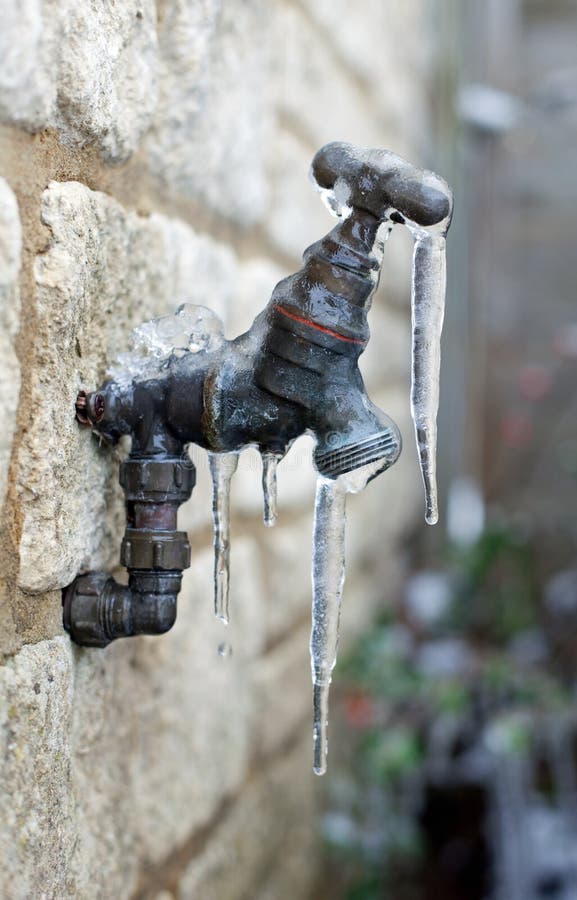Are you currently looking for additional info concerning How to prepare your home plumbing for winter weather?

Winter can damage your pipes, particularly by freezing pipes. Below's exactly how to stop it from taking place and what to do if it does.
Introduction
As temperature levels drop, the risk of icy pipes boosts, potentially bring about expensive fixings and water damages. Recognizing how to prevent frozen pipelines is critical for property owners in chilly environments.
Understanding Frozen Pipes
What creates pipelines to freeze?
Pipes ice up when revealed to temperatures below 32 ° F (0 ° C) for extended durations. As water inside the pipes ices up, it broadens, taxing the pipeline walls and possibly creating them to rupture.
Risks and problems
Icy pipes can lead to supply of water interruptions, home damages, and pricey repairs. Burst pipelines can flooding homes and trigger comprehensive structural damages.
Indicators of Frozen Pipes
Identifying frozen pipes early can stop them from breaking.
Just how to determine icy pipes
Search for decreased water circulation from taps, unusual odors or sounds from pipelines, and noticeable frost on revealed pipes.
Prevention Tips
Shielding vulnerable pipelines
Cover pipelines in insulation sleeves or use heat tape to shield them from freezing temperatures. Focus on pipelines in unheated or outside locations of the home.
Home heating methods
Maintain interior areas effectively heated up, particularly areas with pipes. Open up cabinet doors to allow warm air to flow around pipes under sinks.
Protecting Exterior Plumbing
Yard pipes and outside taps
Detach and drain yard pipes before winter months. Install frost-proof faucets or cover outdoor faucets with shielded caps.
What to Do If Your Pipes Freeze
Immediate activities to take
If you suspect frozen pipelines, keep faucets available to alleviate pressure as the ice thaws. Use a hairdryer or towels taken in hot water to thaw pipelines gradually.
Long-Term Solutions
Architectural modifications
Take into consideration rerouting pipelines away from exterior wall surfaces or unheated areas. Add added insulation to attic rooms, cellars, and crawl spaces.
Updating insulation
Invest in high-quality insulation for pipes, attics, and walls. Appropriate insulation aids preserve regular temperature levels and minimizes the risk of icy pipelines.
Final thought
Stopping frozen pipelines requires proactive procedures and fast actions. By comprehending the reasons, indications, and preventive measures, home owners can shield their plumbing throughout cold weather.
6 Proven Ways to Prevent Frozen Pipes and Protect Your Home
Disconnect and Drain Garden Hoses
Before winter arrives, start by disconnecting your garden hoses and draining any remaining water. Close the shut-off valves that supply outdoor hose bibs and leave the outdoor faucet open to allow any residual water to drain. For extra protection, consider using faucet covers throughout the colder months. It’s also important to drain water from any sprinkler supply lines following the manufacturer’s directions.
Insulate Exposed Pipes
Insulating your pipes is an effective way to prevent freezing. Pipe insulation is readily available at home improvement stores and is relatively inexpensive. Pay close attention to pipes in unheated areas such as the attic, basement, crawl spaces, or garage. Apply foam insulation generously to create a buffer against the cold. You can also wrap your pipes in heat tape or thermostat-controlled heat cables for added warmth.
Seal Air Leaks
Inspect your home for any cracks or openings that could let in cold air. Seal any holes around the piping in interior or exterior walls, as well as the sill plates where your home rests on its foundation. Additionally, make sure to keep your garage door closed unless you’re entering or exiting. Leaving it open creates a significant air leak that can lead to frozen pipes.
Allow Warm Air Circulation
During cold snaps, it’s essential to allow warm air to circulate evenly throughout your home. Leave interior doors ajar to promote better airflow. Open kitchen and bathroom cabinets to help distribute heat consistently around the rooms. If you have small children or pets, be sure to remove any household chemicals or potentially harmful cleaners from open cabinets for safety.
Let Faucets Drip
A small trickle of water can make a big difference in preventing ice formation inside your pipes. When temperatures drop significantly, start a drip of water from all faucets served by exposed pipes. This continuous flow helps prevent the water from freezing. Additionally, running a few faucets slightly can relieve pressure inside the pipes, reducing the chances of a rupture if the water inside does freeze.
https://choateshvac.com/6-proven-ways-to-prevent-frozen-pipes-and-protect-your-home/

As a reader about How To Avoid Freezing Pipes, I think sharing that information was beneficial. Enjoyed reading our article? Please quickly share it. Let another person check it out. Thanks a bunch for being here. Please visit our blog back soon.
Contact
Comments on “Guidance for Preventing Frozen Plumbing in Winter: Specialist Advice”